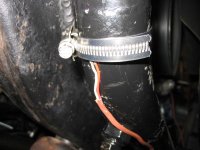agirgen
New Member
I am in the process of chainging out the radiator, power steering system and transmission on my 74. When I got the transmission, I ordered one of those fancy electric fan powered remote coolers with it. Yesterday, I got my new four core radiator from Wild Horses and (I didn't think of this when I bought it) it has a transmission cooler on it as well. I was under the impression I was getting a trans-coolerless radiator. So, now i have two coolers and two systems that need to be cool... Should I run the transmission through the radiator and use the remote cooler for my power steering box or vice versa? The original stock P/S cooler is in pretty sad shape and I am a little leery what it looks like inside... the last power steering box pretty much turned itself into a grenade!
Thanks in advace for any advice! ;D
Later,
Girg
Thanks in advace for any advice! ;D
Later,
Girg














